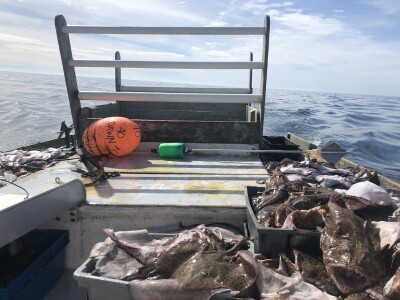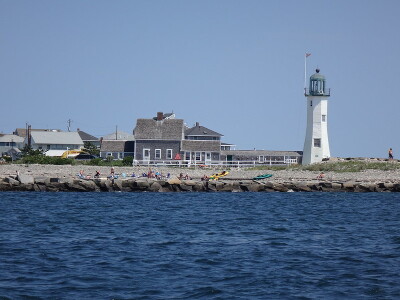Chesapeake Bay's crab season started yesterday, on April Fools' Day. And according to many locals, anyone on the hunt opening day would have brought home the wrong kind of blues.
For many watermen, the real season doesn't begin until the crabs are really on the move in mid- to late-April. Until they rouse from their winter dormancy and begin moving around, blue crabs are unlikely to land themselves in anyone's pots. This year, however, the region is experiencing unusually cold temperatures and late-season snow, which could push the season even later.
While it's not unusual for fishermen to bring back the first reports of ocean weather and temperature oddities, it does seem odd that there are so many to report and no apparent trend outside of the magnitude of these anomalies.
The same cold snap is keeping white shrimp scarce off the southern Atlantic coast. Their spawn produce the fall crop. And no one knows what will happen in the meantime with the summer brown shrimp.
Last year, warm waters swung far north far too early in the season, which prompted Maine's money-maker lobster crop to shed their hard shells early. Soft-shells, or shedders, are great for small, local, live markets. But they are more difficult to ship, making the season borderline at best for profitability.
In some places, the shifts in water temperatures are simply resulting in some species moving into vastly different territory. Codfish are hard to come by in the Gulf of Maine and Georges Bank, but they are rebounding in Norway and off Newfoundland.
Humboldt squid have moved far north off the coast of California over the last several years, possibly in search of cooler waters.
Maybe the populations of different species have always behaved this way, and we paid less attention because fishing was managed, shall we say, less proactively?
In my mind, it indicates two critical things. First, that we need to pay attention to these shifts and look for patterns. Second, the best way to keep the fishing industry alive through these changes is to give fishermen more flexibility to go after multiple species.
Our current management trend toward fishing quotas does the opposite. This style of management may work great for some fisheries, but it does not suit all, or arguably even most.
Fishermen don't fish in a vacuum, nor should they be managed that way.






